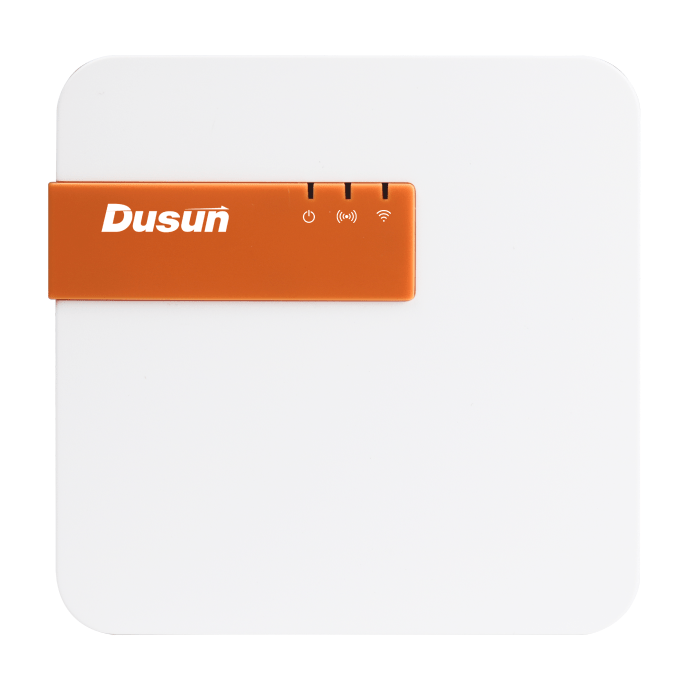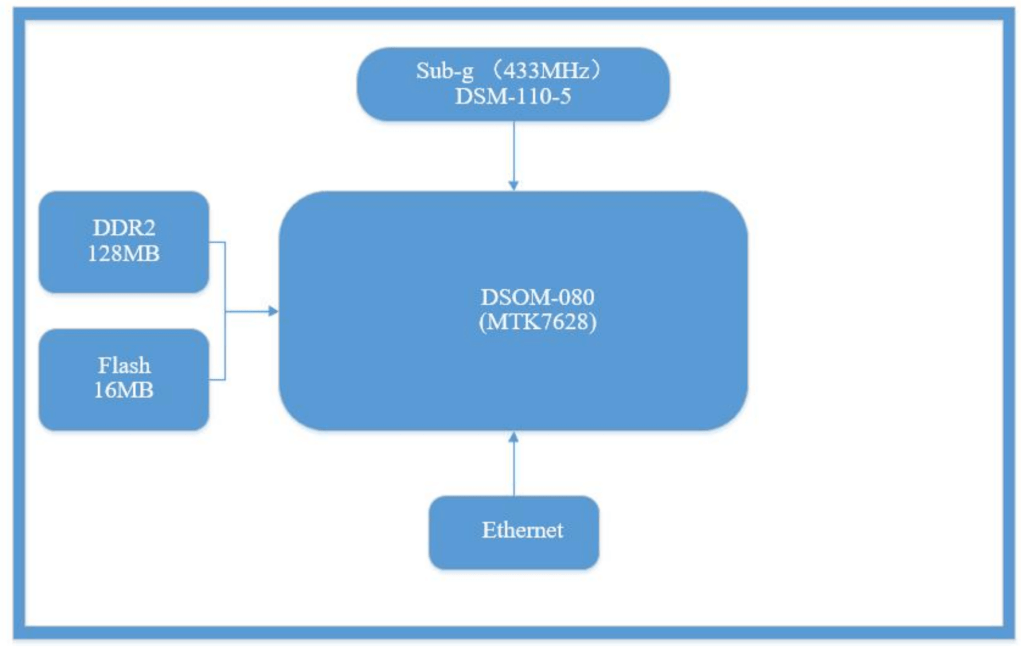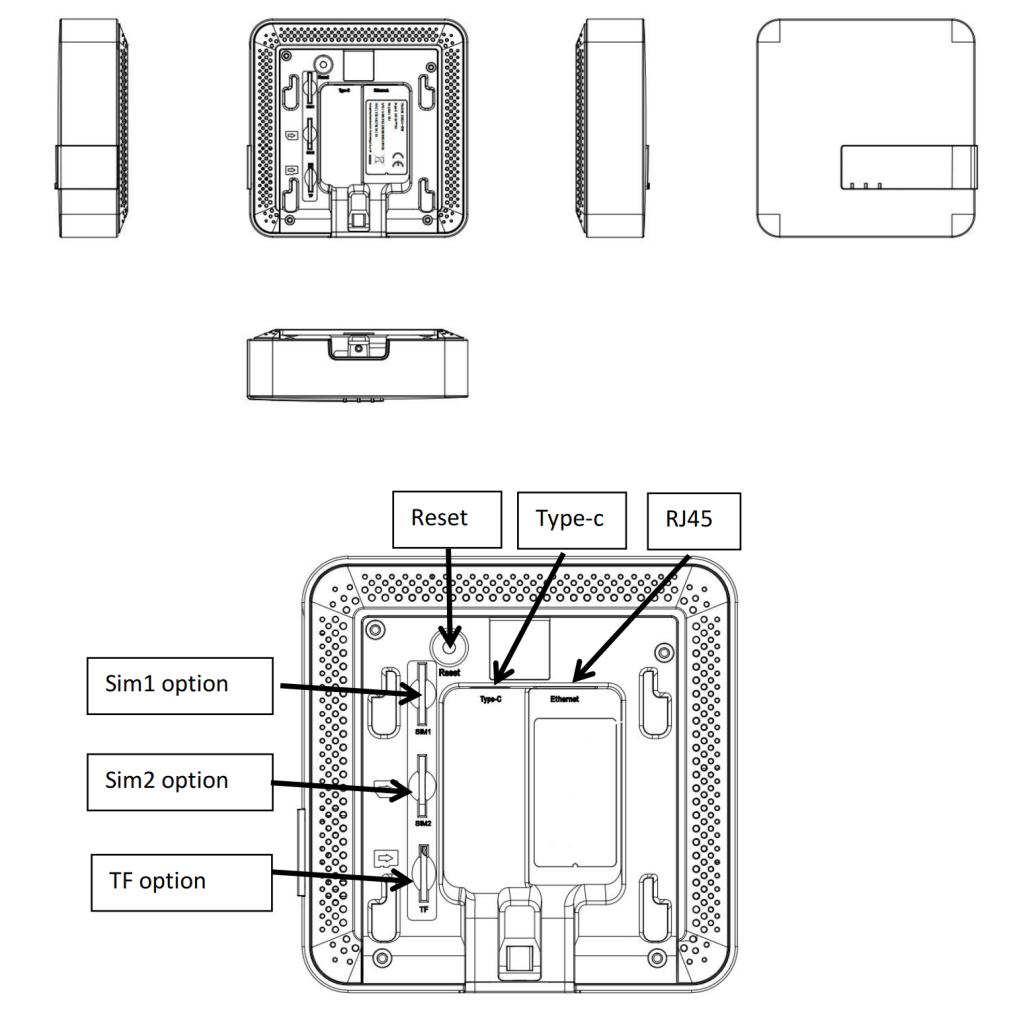MTK7628 433 MHz Remote Control Gateway

| Model | Wi-Fi 2.4G | Sub-g(433MHz) | Ethernet |
|---|---|---|---|
| DSGW-096 | ● | ● | ● |
The benefits of 433MHz over Z-Wave, WiFi, and Zigbee include robust wireless signal penetration, extended transmission distance, and exceptional diffraction ability. However, 433MHz only has a 9600bps data transfer rate, it is often only appropriate for applications requiring a minimal quantity of data transmission. The star network design is supported by 433MHz wireless technology, which may also increase the network coverage area by adding more base stations. In general, 433Mhz networks use a transparent data transmission mechanism. You may also interested in another BLE NB-IoT transparent gateway as well.
1. Introduction of Wireless Ethernet Gateway
The DSGW-096 is a ceiling-mountable gateway used in the wireless remote control of garage door, weather station, etc. It a central hub device supporting Wi-Fi and Etherent as well. The user can connect the network through Wi-Fi, Ethernet.
You may also interested in ESP32 gateway and Home Assistant Zigbee Z-Wave gateway.
- OS: Linux@ OpenWrt
- USB 5V type C Power Supply and PoE Ethernet Power supply
- Processor: MTK7628 (MIPS24KEc(580MHZ))
- RAM: 128MB
- Flash: 16MB
- Support IEEE802.11n,IEEE802.11g,IEEE 802.11b Protocol
- Support Sub-g
- One WAN/LAN variable network port

2. Mechanical Requirement of Wireless Ethernet Gateway

3. Specifications of Wireless Ethernet Gateway
3.1. Ceiling Mountable 433MHz MQTT Gateway Technical Specification
| Power Adapter | Input:100V~240V AC/50~60HZ Output:5V/2A, Micro USB |
| Ethernet | The network interface supports CAT-5/CAT-5E to transmit data. It is WAN/LAN variable. |
| Indicator LEDs | Green led: Power LED normally on when powered on Red led: BLE/Zigbee/Z-WAVE LED is flash when the signal come Blue led: Wi-Fi LED normally on after connecting to Wi-Fi for 1-2 sec |
| Reset Button | The reset button is hole button, soft reset. After pressing the reset button for more than 5 seconds, the Gateway will be restored to the factory settings. |
| Operating Temperature | 0℃~45℃ |
3.2. Ceiling-mountable 433MHz Gateway Performance Requirement
| Wi-Fi Performance | • IEEE wireless LAN standard: • IEEE802.11n; IEEE802.11g; IEEE 802.11b • Data Rate: • IEEE 802.11b Standard Mode:1,2,5.5,11Mbps • IEEE 802.11g Standard Mode:6,9,12,18,24,36,48,54 Mbps • IEEE 802.11n: MCS0~MCS7 @ HT20/ 2.4GHz band • MCS0~MCS7 @ HT40/ 2.4GHz band • Sensitivity: IEEE 802.11b: -98dBm at 1Mbps IEEE 802.11b: -88dBm at 11Mbps IEEE 802.11g: -93dBm at 6Mbps IEEE 802.11g: -75dBm at 54Mbps IEEE 802.11n: -93dBm @HT20 MCS0 IEEE 802.11n: -73dBm @HT20 MCS7 IEEE 802.11n: -90dBm @HT40 MCS0 IEEE 802.11n: -70dBm @HT40 MCS0 • Transmit Power: IEEE 802.11b: 19.5dBm @1Mbps DSSS IEEE 802.11g: 16dBm @54MHz OFDM IEEE 802.11n: 14dBm @HT20/40 MCS7 OFDM • Wireless Security: AES, Hash (SHA-2), RSA, ECC, Random Number Generator (RNG) • Working mode: Bridge、Gateway、AP Client • Range: 50 meters minimum, open field • Transmit Power: Up to 20.5dBm • Highest Transmission Rate: 150Mbps • Frequency offset: +/- 50KHZ • Frequency Range (MHz): 2412.0~2483.5 • Low Frequency (MHz): 2412 • High Frequency (MHz): 2483.5 • E.i.r.p (Equivalent Isotopically Radiated power) (mW)<100mW • Bandwidth (MHz):20MHz/40MHz • Modulation: BPSK/QPSK, FHSSCCK/DSSS, 64QAM/OFDM |
| Sub-G Performance | • TX Power: 14dBm • Range: 100 meters minimum, open filed • Receiving Sensibility:-94dBm • Frequency 433MHz |
| Ethernet | 10/100Mbps |
4. QA Requirements of Wireless Ethernet Gateway
| Information Description | Standard(Yes) custom(No) |
|---|---|
| ESD Testing | Yes |
| RF Antenna Analysis | Yes |
| Environmental Testing | Yes |
| Reliability Testing | Yes |
| Certification | FCC,CE ,IC, Z-wave plus, RoHs |


















